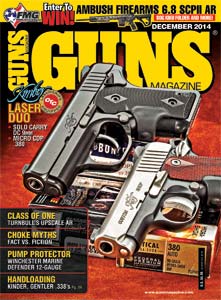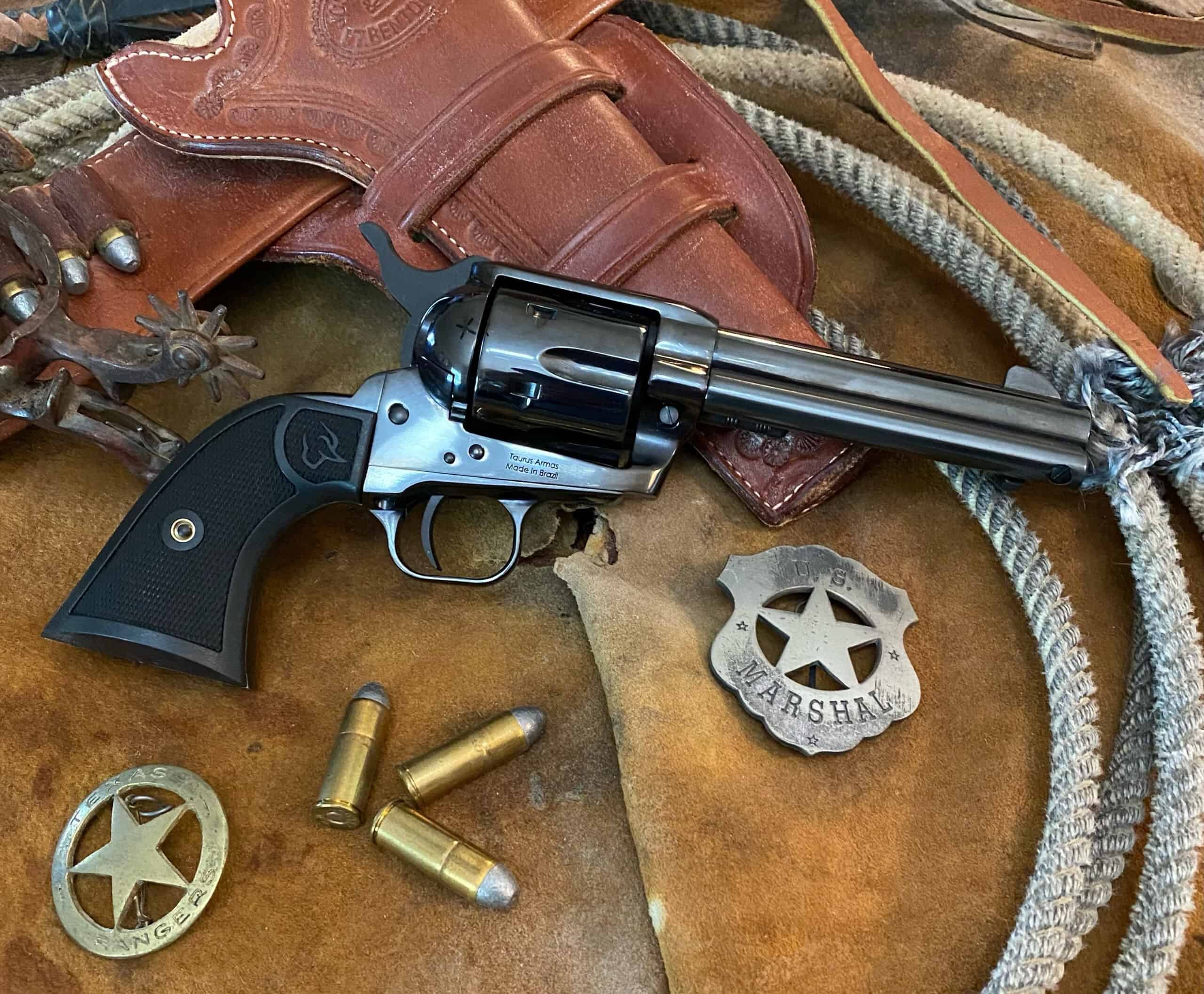| Rimfires |
0
By Dave Anderson
Last month I described my nephew Mike buying his first rifle, a Winchester 70 Featherweight in .300 Win Mag. Mike was sure this rifle, along with his Benelli 12-gauge shotgun, would cover all his hunting and shooting needs. We went through the steps of checking over the rifle, cleaning the bore, fitting a scope and bore sighting.
Mike got out two boxes of Remington ammunition loaded with 180-grain Core-Lokt bullets. “This was on sale, is it good ammo?” I assured him it was fine. A benefit of choosing a popular cartridge such as the .300 WM is more ammunition choices for sale in more places, and occasionally finding attractive sale prices.
Mike settled at the bench with the rifle resting on front and rear bags. I’d set up a target at 25 yards.
“Why not shoot at the 100-yard target?”
“If I skip this step I generally regret it. It is discouraging to fire three shots at 100 yards and not have a hole on paper.”
I pointed out a few benchrest basics, such as placing the forearm on the front bag in the same position for each shot, aiming by squeezing the rear sandbag rather than by steering with hands or face, focusing intently on the reticle while pressing the trigger smoothly straight back. Because a light .300 does have some recoil I made sure he pulled the butt pad firmly into his shoulder and suggested he grip the forearm with the left hand to reduce muzzle rise.
I watched Mike carefully as he fired. He didn’t blink! This was a good sign. I’d have bet he would. No one had told him to be afraid of recoil, so he wasn’t. The shot was just a few inches from the aiming point. After adjusting for windage and elevation I took a turn at 100 yards. A couple of shots and it was hitting an inch or so high.
I told Mike to go ahead and shoot three rounds, first loading all three in the magazine so we could start checking on how well it fed. He clicked three rounds into the magazine, closed the bolt to chamber a cartridge, and began to sit down again.
Two Winchester 70 Featherweights include Mike’s .300 Win Mag (left) with Burris
3-9×40 and Dave’s .264 Win Mag with Leupold 4.5-14×40. Dave was surprised how
much wood density and weight varies on the two rifles. The stock of the .300
weighs 28 ounces, while the outwardly identical stock of Dave’s .264 weighs 37 ounces.
“Hold it a second,” I said. “Open the bolt, extract the cartridge, replace it in the magazine, and let’s try that again. It’s just as easy to develop good habits. A very good habit is to never have a round in the chamber unless the rifle is in your hands and under full control. Get settled at the bench, get the rifle indexed on target ready to shoot, then chamber a cartridge.”
Well, those first three shots went into just over an inch, and he didn’t blink, flinch or complain of recoil. “Not bad, my boy, not bad at all.”
The second 3-shot group was about the same size. The third had a shot a couple of inches out of the group. Mike still wasn’t blinking, but he didn’t seem to be having quite as much fun.
“Let’s take a break,” I suggested. “It’s a good idea to keep the barrel cool whenever possible.” What I didn’t say was it doesn’t hurt to let the shooter cool as well. It is true some barrels throw wild shots as the barrel heats, though I suspect it is often the shooter rather than the barrel. Recoil fatigue is a definite factor.
“Mike, I know you said your .300 is the only rifle you’ll ever need. Just for fun, while the barrel is cooling try a few shots with this.” I handed him my Kimber 84M Montana .223. “Dry fire a few times first to get the feel of the trigger. That’s another good habit anytime you intend to fire a different rifle.”
“Wow!” Mike exclaimed at the first dry fire. Well, I’d expected as much. Two pounds and crisp was a new experience. He shot a decent group on paper and then tried a few shots at random targets downrange. I knew there was no need to say anything. Light, well-balanced, accurate rifles with flawless triggers and little recoil speak for themselves. It’s just a matter of persuading people to try them.
“Uncle, I remember you told me not to get a .300 Magnum for my first rifle. Don’t you like the cartridge?”
“On the contrary. The .300 Win Mag is one of my all-time favorites. I’ve shot more game with it than any other except maybe the .270. But the fact is I love shooting rifles. I shoot a lot more at paper and steel targets than at game.”
“The .223 shoots about as flat as the .300, makes a hole in paper or rings steel as well, and does so with much less expensive ammo, smaller powder charges, and longer barrel life.” I didn’t mention the recoil factor. I try to avoid feeding recoil phobia or making new shooters recoil-conscious.
“You keep mentioning things a rifleman does. Are there other unwritten rules?”
“Hmmm. Let’s see. There are some don’ts. Don’t touch someone else’s rifle without asking permission. Don’t ask how much it cost. Don’t ask someone how many guns he owns. Don’t ask what’s the best cartridge for deer unless you enjoy two hours of boredom. Handle a rifle by the stock as much as possible, avoid touching the metal. It can lead to rust marks on a blued gun. Wipe the metal down with a soft cloth with some kind of metal preservative on it before putting the rifle away…”
“OK, thanks!”
Each shooting bench is a little different. We couldn’t lower the chair at this range,
so we raised the rear bag, and moved the front rest back a bit so Mike could sit up
straighter. This gets the buttstock evenly against the shoulder to spread recoil, and
lets the body flex a bit to absorb recoil. With a low-recoil rifle the left hand is
on the rear bag to make fine adjustments to aim. With a rifle such as this Featherweight
.300, Dave recommends gripping the forearm ahead of the front rest.
Mike’s first 100-yard group with his new Winchester 70 .300 Win Mag rifle, using
Remington 180-grain Core-Lokt cartridges. Not too bad for someone who had never
fired anything larger than a .243 before.
“Make sure screwdriver blades fit screw slots so they don’t get marred. Store the rifle in a cool, dry, secure location and check on it at least once a month. Transport it in a case. Never boast about your rifle, or disparage someone else’s. Never tolerate unsafe gunhandling by anyone, even your old uncle.
Don’t offer advice unless asked…”
“Speaking of which…”
“Well, you asked. But you’re right, that’s enough for now.”
Mike was wearing a thoughtful expression. He began picking up the fired cases and putting them back in the box.
“Uncle, my buddy says fired cases can be reloaded. Can you show me how to reload? Then I could afford to shoot more. I was thinking, a rifleman needs a .22. It would be nice to have a .243 for coyotes and deer.
“My 12-gauge is kind of heavy, a light 20-gauge semi-auto would be better for upland birds. So let’s see, that comes to… five guns is all I’d ever need. Unless I go to Africa some day, then I’ll need a big rifle. My buddy has an SKS, it sure is fun to shoot. Seven guns is all I’d ever need… Uncle, why are you blinking? Are those tears in your eyes?”
“Happy tears, my boy. Happy tears.”
It isn’t every day a rifleman is born.

Download A PDF Of The GUNS Magazine December 2014 Issue Now!


